MaryAnn Bernal's Blog, page 202
January 22, 2015
History Trivia - Ethelred of Wessex defeats Danish invasion army
January 22

871 Battle at Basing: Danish invasion army vanquished Ethelred of Wessex.

1371 King Robert II Stuart of Scotland was crowned.

1506 The first contingent of 150 Swiss Guards arrived at the Vatican.
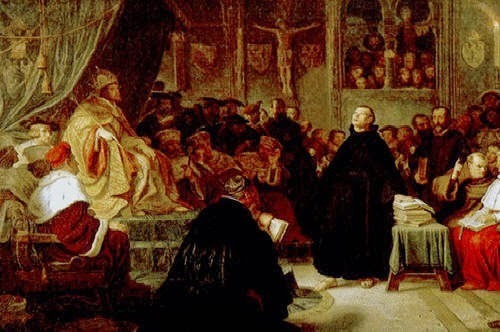
1521 Charles V, Holy Roman Emperor, opened the Diet of Worms.

1552 Sir Edward Seymour, uncle to King Edward VI of England, was executed.


871 Battle at Basing: Danish invasion army vanquished Ethelred of Wessex.

1371 King Robert II Stuart of Scotland was crowned.

1506 The first contingent of 150 Swiss Guards arrived at the Vatican.

1521 Charles V, Holy Roman Emperor, opened the Diet of Worms.

1552 Sir Edward Seymour, uncle to King Edward VI of England, was executed.

Published on January 22, 2015 03:00
January 21, 2015
Diane Turner - London Rocks - 21-01-2015
 This show is mainly an obituary for James aka Tom Mackenzie (02/07/1978 - 19/01/2015), Kim Fowley (21/7/39 - 15/1/15), Dallas Taylor From Crosby Stills and Nash, Nancy Jean Bjurstorm (1957 - 15/1/15), Anne Kirkbridge (21/6/54 - 19/1/15) plus Joe Cocker (20/5/44 - 22/1/12/14)
This show is mainly an obituary for James aka Tom Mackenzie (02/07/1978 - 19/01/2015), Kim Fowley (21/7/39 - 15/1/15), Dallas Taylor From Crosby Stills and Nash, Nancy Jean Bjurstorm (1957 - 15/1/15), Anne Kirkbridge (21/6/54 - 19/1/15) plus Joe Cocker (20/5/44 - 22/1/12/14)
Published on January 21, 2015 12:43
New Tech Could Reveal Secrets in 2,000-Year-Old Scrolls
by Tia Ghose
Live Science
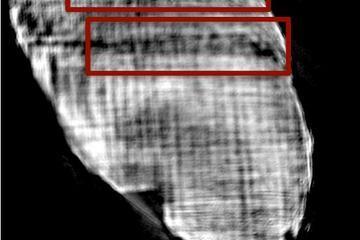
 Hundreds of rolled, charred papyrus scrolls that were buried in ash in Herculaneum after the eruption of Mount Vesuvius in A.D. 79 could finally be read, thanks to a new technique that uses X-ray tomography. Here, letters from one of the interior layers of a charred scroll can be read. In the top the sequence of Greek capital letters spells PIPTOIE (pi-iota-pi-tau- omicron-iota-epsilon); in the bottom the letter sequence of the next line, EIPOI (epsilon-iota-pi-omicron-iota)
Hundreds of rolled, charred papyrus scrolls that were buried in ash in Herculaneum after the eruption of Mount Vesuvius in A.D. 79 could finally be read, thanks to a new technique that uses X-ray tomography. Here, letters from one of the interior layers of a charred scroll can be read. In the top the sequence of Greek capital letters spells PIPTOIE (pi-iota-pi-tau- omicron-iota-epsilon); in the bottom the letter sequence of the next line, EIPOI (epsilon-iota-pi-omicron-iota)
Credit: Mocella et al, Nature Communications
Hundreds of ancient papyrus scrolls that were buried nearly 2,000 years ago after the eruption of Mount Vesuvius could finally be read, thanks to a new technique.
The X-ray-based method can be used to decipher the charred, damaged texts that were found in the ancient town of Herculaneum without having to unroll them, which could damage them beyond repair, scientists say.
One problem with previous attempts to use X-rays to read the scrolls was that the ancient writers used a carbon-based material from smoke in their ink, said study co-author Vito Mocella, a physicist at the National Research Council in Naples, Italy.
378Submit 259Reddit [image error] [image error]
[image error] [image error] 
 Hundreds of rolled, charred papyrus scrolls that were buried in ash in Herculaneum after the eruption of Mount Vesuvius in A.D. 79 could finally be read, thanks to a new technique that uses X-ray tomography. Here, letters from one of the interior layers of a charred scroll can be read. In the top the sequence of Greek capital letters spells PIPTOIE (pi-iota-pi-tau- omicron-iota-epsilon); in the bottom the letter sequence of the next line, EIPOI (epsilon-iota-pi-omicron-iota)
Hundreds of rolled, charred papyrus scrolls that were buried in ash in Herculaneum after the eruption of Mount Vesuvius in A.D. 79 could finally be read, thanks to a new technique that uses X-ray tomography. Here, letters from one of the interior layers of a charred scroll can be read. In the top the sequence of Greek capital letters spells PIPTOIE (pi-iota-pi-tau- omicron-iota-epsilon); in the bottom the letter sequence of the next line, EIPOI (epsilon-iota-pi-omicron-iota)
Credit: Mocella et al, Nature Communications View full size image Hundreds of ancient papyrus scrolls that were buried nearly 2,000 years ago after the eruption of Mount Vesuvius could finally be read, thanks to a new technique.
The X-ray-based method can be used to decipher the charred, damaged texts that were found in the ancient town of Herculaneum without having to unroll them, which could damage them beyond repair, scientists say.
One problem with previous attempts to use X-rays to read the scrolls was that the ancient writers used a carbon-based material from smoke in their ink, said study co-author Vito Mocella, a physicist at the National Research Council in Naples, Italy.
"The papyri have been burnt, so there is not a huge difference between the paper and the ink," Mocella told Live Science. That made it impossible to decipher the words written in the documents.
If the new method works, it could be used to reveal the secrets of one of the few intact libraries from antiquity, the researchers said. [See How the New X-ray Method Works]
Buried in ash
Both the Roman city of Pompeii and the nearby, wealthy seaside town of Herculaneum were wiped out when Mount Vesuvius erupted in A.D. 79, killing thousands of people and covering fine villas in ash and lava.
In the 1750s, workers uncovered a library in a villa thought to be the home of a Roman statesman. The site, known as the Villa of the Papyri, contained nearly 2,000 ancient papyrus scrolls that had been charred by the volcanic heat.
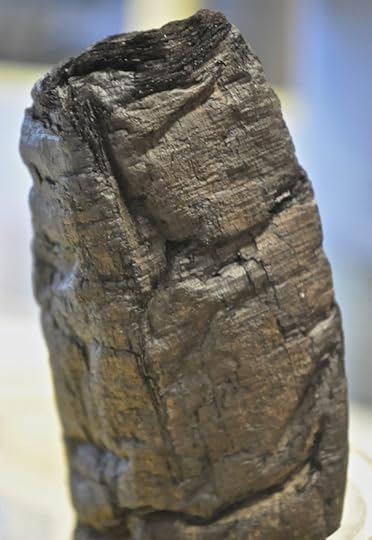 [image error]
[image error]
 The papyrus scrolls found in a Herculaneum villa in the 1750s were badly charred by the eruption of Mount Vesuvius in A.D. 79. Since their discovery in the 1700s, researchers have tried many techniques to unroll the charred, delicate texts.
The papyrus scrolls found in a Herculaneum villa in the 1750s were badly charred by the eruption of Mount Vesuvius in A.D. 79. Since their discovery in the 1700s, researchers have tried many techniques to unroll the charred, delicate texts.
Credit: E. BrunView full size image
Since then, historians have tried many ingenious (and some not-so-ingenious) methods for reading the damaged scrolls.
"They poured mercury on them, they soaked them in rosewater — all kinds of crazy stuff," said Jennifer Sheridan Moss, a papyrologist at Wayne State University in Detroit and the president of the American Society of Papyrologists.
From the few scrolls that could be unrolled and deciphered, historians determined that the library was filled mainly with writings on Epicurean philosophy — a school of thought that holds, among other things, that the goal of human life is happiness, characterized by the absence of pain and mental strife — and was part of the collection of a prolific writer named Philodemus.
"Most of what we know of Epicureanism is from these papyri," Mocella said.
Though some of the methods used to unroll the scrolls, such as a clever unrolling machine designed by a monk in the 1700s, were fairly successful, most wound up damaging the fragile documents.
Revealing secrets
Historians decided that the potential for damage was too great, and thus locked the remaining scrolls, still rolled up, in the National Library of Naples in Italy. A few years ago, researchers tried to read the scrolls without unrolling them, using X-ray tomography, which takes X-rays from multiple angles to recreate a 3D image of an object.
But this process is based on the fact that hard, dense materials absorb more X-rays than softer materials, and it didn't work for the scrolls because the smoke-based ink was too similar to the charred paper.
So the team looked to a similar technique, called X-ray phase-contrast tomography. Because the letters on the papyrus are slightly raised in height, the waves of X-rays that hit the letters would be reflected back with a slightly shifted phase, compared with the waves that hit the underlying material. By measuring this phase difference, the team was able to reproduce the shape of the letters inside the rolled scrolls.
So far, the team has analyzed six scrolls that were given to Napoleon Bonaparte as gifts and are now housed at the French Institute in Paris. They have deciphered some of the Greek letters and words written inside the rolled-up, burned, smushed scrolls.
Still, deciphering the words in the innermost layers was extremely challenging, the authors wrote in their paper.
Promising technique
The texts on the scrolls are unlikely to yield earth-shattering insights, given how many of the other scrolls have been deciphered, Moss said.
But the new technique holds promise for other burnt papyri as well, Moss said.
"Most people now believe there is a whole other library under there in that Villa of the Papyri," Moss told Live Science. That's because, in the Roman world, most libraries held all the Greek treatises in one section and all the Latin books in another, she said.
Archaeologists have a good idea of where the Latin library may be, but so far, they've found no trace of the Latin texts, in part because noxious gases released from the ground make the site difficult to excavate. But if they do find the hidden library, this new technique could become very useful there, Moss said.
"We could easily find more things that are in bad shape like this, and then the technology could be applied to them," Moss said.
The new technique was described today (Jan. 20) in the journal Nature Communications.
Live Science

 Hundreds of rolled, charred papyrus scrolls that were buried in ash in Herculaneum after the eruption of Mount Vesuvius in A.D. 79 could finally be read, thanks to a new technique that uses X-ray tomography. Here, letters from one of the interior layers of a charred scroll can be read. In the top the sequence of Greek capital letters spells PIPTOIE (pi-iota-pi-tau- omicron-iota-epsilon); in the bottom the letter sequence of the next line, EIPOI (epsilon-iota-pi-omicron-iota)
Hundreds of rolled, charred papyrus scrolls that were buried in ash in Herculaneum after the eruption of Mount Vesuvius in A.D. 79 could finally be read, thanks to a new technique that uses X-ray tomography. Here, letters from one of the interior layers of a charred scroll can be read. In the top the sequence of Greek capital letters spells PIPTOIE (pi-iota-pi-tau- omicron-iota-epsilon); in the bottom the letter sequence of the next line, EIPOI (epsilon-iota-pi-omicron-iota)Credit: Mocella et al, Nature Communications
Hundreds of ancient papyrus scrolls that were buried nearly 2,000 years ago after the eruption of Mount Vesuvius could finally be read, thanks to a new technique.
The X-ray-based method can be used to decipher the charred, damaged texts that were found in the ancient town of Herculaneum without having to unroll them, which could damage them beyond repair, scientists say.
One problem with previous attempts to use X-rays to read the scrolls was that the ancient writers used a carbon-based material from smoke in their ink, said study co-author Vito Mocella, a physicist at the National Research Council in Naples, Italy.
378Submit 259Reddit
 [image error] [image error]
[image error] [image error] 
 Hundreds of rolled, charred papyrus scrolls that were buried in ash in Herculaneum after the eruption of Mount Vesuvius in A.D. 79 could finally be read, thanks to a new technique that uses X-ray tomography. Here, letters from one of the interior layers of a charred scroll can be read. In the top the sequence of Greek capital letters spells PIPTOIE (pi-iota-pi-tau- omicron-iota-epsilon); in the bottom the letter sequence of the next line, EIPOI (epsilon-iota-pi-omicron-iota)
Hundreds of rolled, charred papyrus scrolls that were buried in ash in Herculaneum after the eruption of Mount Vesuvius in A.D. 79 could finally be read, thanks to a new technique that uses X-ray tomography. Here, letters from one of the interior layers of a charred scroll can be read. In the top the sequence of Greek capital letters spells PIPTOIE (pi-iota-pi-tau- omicron-iota-epsilon); in the bottom the letter sequence of the next line, EIPOI (epsilon-iota-pi-omicron-iota)Credit: Mocella et al, Nature Communications View full size image Hundreds of ancient papyrus scrolls that were buried nearly 2,000 years ago after the eruption of Mount Vesuvius could finally be read, thanks to a new technique.
The X-ray-based method can be used to decipher the charred, damaged texts that were found in the ancient town of Herculaneum without having to unroll them, which could damage them beyond repair, scientists say.
One problem with previous attempts to use X-rays to read the scrolls was that the ancient writers used a carbon-based material from smoke in their ink, said study co-author Vito Mocella, a physicist at the National Research Council in Naples, Italy.
"The papyri have been burnt, so there is not a huge difference between the paper and the ink," Mocella told Live Science. That made it impossible to decipher the words written in the documents.
If the new method works, it could be used to reveal the secrets of one of the few intact libraries from antiquity, the researchers said. [See How the New X-ray Method Works]
Buried in ash
Both the Roman city of Pompeii and the nearby, wealthy seaside town of Herculaneum were wiped out when Mount Vesuvius erupted in A.D. 79, killing thousands of people and covering fine villas in ash and lava.
In the 1750s, workers uncovered a library in a villa thought to be the home of a Roman statesman. The site, known as the Villa of the Papyri, contained nearly 2,000 ancient papyrus scrolls that had been charred by the volcanic heat.
 [image error]
[image error]
 The papyrus scrolls found in a Herculaneum villa in the 1750s were badly charred by the eruption of Mount Vesuvius in A.D. 79. Since their discovery in the 1700s, researchers have tried many techniques to unroll the charred, delicate texts.
The papyrus scrolls found in a Herculaneum villa in the 1750s were badly charred by the eruption of Mount Vesuvius in A.D. 79. Since their discovery in the 1700s, researchers have tried many techniques to unroll the charred, delicate texts.Credit: E. BrunView full size image
Since then, historians have tried many ingenious (and some not-so-ingenious) methods for reading the damaged scrolls.
"They poured mercury on them, they soaked them in rosewater — all kinds of crazy stuff," said Jennifer Sheridan Moss, a papyrologist at Wayne State University in Detroit and the president of the American Society of Papyrologists.
From the few scrolls that could be unrolled and deciphered, historians determined that the library was filled mainly with writings on Epicurean philosophy — a school of thought that holds, among other things, that the goal of human life is happiness, characterized by the absence of pain and mental strife — and was part of the collection of a prolific writer named Philodemus.
"Most of what we know of Epicureanism is from these papyri," Mocella said.
Though some of the methods used to unroll the scrolls, such as a clever unrolling machine designed by a monk in the 1700s, were fairly successful, most wound up damaging the fragile documents.
Revealing secrets
Historians decided that the potential for damage was too great, and thus locked the remaining scrolls, still rolled up, in the National Library of Naples in Italy. A few years ago, researchers tried to read the scrolls without unrolling them, using X-ray tomography, which takes X-rays from multiple angles to recreate a 3D image of an object.
But this process is based on the fact that hard, dense materials absorb more X-rays than softer materials, and it didn't work for the scrolls because the smoke-based ink was too similar to the charred paper.
So the team looked to a similar technique, called X-ray phase-contrast tomography. Because the letters on the papyrus are slightly raised in height, the waves of X-rays that hit the letters would be reflected back with a slightly shifted phase, compared with the waves that hit the underlying material. By measuring this phase difference, the team was able to reproduce the shape of the letters inside the rolled scrolls.
So far, the team has analyzed six scrolls that were given to Napoleon Bonaparte as gifts and are now housed at the French Institute in Paris. They have deciphered some of the Greek letters and words written inside the rolled-up, burned, smushed scrolls.
Still, deciphering the words in the innermost layers was extremely challenging, the authors wrote in their paper.
Promising technique
The texts on the scrolls are unlikely to yield earth-shattering insights, given how many of the other scrolls have been deciphered, Moss said.
But the new technique holds promise for other burnt papyri as well, Moss said.
"Most people now believe there is a whole other library under there in that Villa of the Papyri," Moss told Live Science. That's because, in the Roman world, most libraries held all the Greek treatises in one section and all the Latin books in another, she said.
Archaeologists have a good idea of where the Latin library may be, but so far, they've found no trace of the Latin texts, in part because noxious gases released from the ground make the site difficult to excavate. But if they do find the hidden library, this new technique could become very useful there, Moss said.
"We could easily find more things that are in bad shape like this, and then the technology could be applied to them," Moss said.
The new technique was described today (Jan. 20) in the journal Nature Communications.
Published on January 21, 2015 04:43
Mysterious 15th-Century Irish Town Found Near Medieval Castle
by Laura Geggel
Live Science
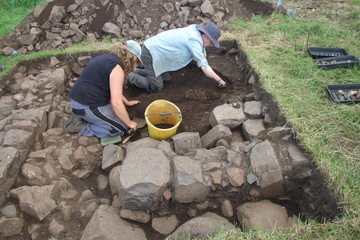
 Archaeologists excavated a stone structure near Dunluce Castle along the coast of Northern Ireland. Experts already knew about a town that flourished in the 1600s, but they were unaware of the earlier settlement, which dates back to the late 1400s and early 1500s.
Archaeologists excavated a stone structure near Dunluce Castle along the coast of Northern Ireland. Experts already knew about a town that flourished in the 1600s, but they were unaware of the earlier settlement, which dates back to the late 1400s and early 1500s.
Credit: Northern Ireland Environment Agency
The medieval Dunluce Castle, located on the craggy rocks of Northern Ireland's coast, is neighbors with a mysterious stone settlement, according to a recent excavation.
The castle dates back to the 15th century, and once housed the powerful MacQuillan family, which controlled a large amount of territory in Northern Ireland. On a recent dig, the Northern Ireland Environment Agency planned to uncover part of the lost 17th century town of Dunluce near the castle. But instead, archaeologists stumbled upon an earlier settlement that dates back to the 15th and 16th centuries.
"This is a tremendously exciting historical development," Mark Durkan, Northern Ireland's environment minister, said in a statement. "Traces of buildings were unearthed close to the cliffs upon which the castle was built. These buildings most likely formed a small settlement, just outside the original castle gate." [See photos of the excavation near Dunluce Castle]
The settlement's remains include a stone structure with a doorway at its corner, "which is quite different to the 17th century buildings revealed to date," Durkan said. Through radiocarbon dating, the researchers determined that a fireplace inside was used in the late 15th century, about the same time that the MacQuillans lived in Dunluce Castle.
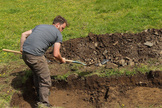 [image error]
[image error]
 An archeologist digs through the rocky field near Dunluce Castle. The town founded by the MacDonnells in 1608 thrived until 1642, when it burnt down after a conflict. The town never recovered, and people abandoned it in the 1680s, according to researchers.
An archeologist digs through the rocky field near Dunluce Castle. The town founded by the MacDonnells in 1608 thrived until 1642, when it burnt down after a conflict. The town never recovered, and people abandoned it in the 1680s, according to researchers.
Credit: Northern Ireland Environment AgencyView full size image"We are extremely lucky to make this exciting discovery," Durkan said. "Very few 15th-century buildings, other than those built entirely from stone, have survived in Ulster and normally there would be few traces, if any, for archaeologists to investigate."
The archaeologists also found pottery that dates back to the late medieval period, which raises questions about the settlement's relationship to the early inhabitants of Dunluce, experts said.
"Up to now, we knew there was a substantial 17th century settlement in the fields around Dunluce,"Durkan said. "What we are now beginning to uncover are traces of earlier and extensive late medieval settlement activity, which are equally as important as the remains of the 17th century Dunluce Town. This provides an exciting new avenue of research to explore as part of our future investigations at Dunluce."
The government of Northern Ireland plans to continue the excavation of the town at Dunluce and the castle's gardens with money from the Heritage Lottery Fund.
Live Science

 Archaeologists excavated a stone structure near Dunluce Castle along the coast of Northern Ireland. Experts already knew about a town that flourished in the 1600s, but they were unaware of the earlier settlement, which dates back to the late 1400s and early 1500s.
Archaeologists excavated a stone structure near Dunluce Castle along the coast of Northern Ireland. Experts already knew about a town that flourished in the 1600s, but they were unaware of the earlier settlement, which dates back to the late 1400s and early 1500s.Credit: Northern Ireland Environment Agency
The medieval Dunluce Castle, located on the craggy rocks of Northern Ireland's coast, is neighbors with a mysterious stone settlement, according to a recent excavation.
The castle dates back to the 15th century, and once housed the powerful MacQuillan family, which controlled a large amount of territory in Northern Ireland. On a recent dig, the Northern Ireland Environment Agency planned to uncover part of the lost 17th century town of Dunluce near the castle. But instead, archaeologists stumbled upon an earlier settlement that dates back to the 15th and 16th centuries.
"This is a tremendously exciting historical development," Mark Durkan, Northern Ireland's environment minister, said in a statement. "Traces of buildings were unearthed close to the cliffs upon which the castle was built. These buildings most likely formed a small settlement, just outside the original castle gate." [See photos of the excavation near Dunluce Castle]
The settlement's remains include a stone structure with a doorway at its corner, "which is quite different to the 17th century buildings revealed to date," Durkan said. Through radiocarbon dating, the researchers determined that a fireplace inside was used in the late 15th century, about the same time that the MacQuillans lived in Dunluce Castle.
 [image error]
[image error]
 An archeologist digs through the rocky field near Dunluce Castle. The town founded by the MacDonnells in 1608 thrived until 1642, when it burnt down after a conflict. The town never recovered, and people abandoned it in the 1680s, according to researchers.
An archeologist digs through the rocky field near Dunluce Castle. The town founded by the MacDonnells in 1608 thrived until 1642, when it burnt down after a conflict. The town never recovered, and people abandoned it in the 1680s, according to researchers.Credit: Northern Ireland Environment AgencyView full size image"We are extremely lucky to make this exciting discovery," Durkan said. "Very few 15th-century buildings, other than those built entirely from stone, have survived in Ulster and normally there would be few traces, if any, for archaeologists to investigate."
The archaeologists also found pottery that dates back to the late medieval period, which raises questions about the settlement's relationship to the early inhabitants of Dunluce, experts said.
"Up to now, we knew there was a substantial 17th century settlement in the fields around Dunluce,"Durkan said. "What we are now beginning to uncover are traces of earlier and extensive late medieval settlement activity, which are equally as important as the remains of the 17th century Dunluce Town. This provides an exciting new avenue of research to explore as part of our future investigations at Dunluce."
The government of Northern Ireland plans to continue the excavation of the town at Dunluce and the castle's gardens with money from the Heritage Lottery Fund.
Published on January 21, 2015 04:37
Greek Tomb Held at Least Five Corpses
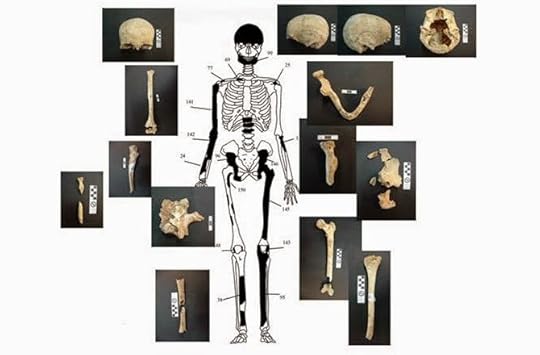 by Rossella Lorenzi
by Rossella Lorenzi Discovery News
It wasn't just a single skeleton that lay buried in the mysterious, lavishly decorated tomb in Amphipolis in northern Greece.
Dating to between 325 B.C. -- two years before Alexander the Great's death -- and 300 B.C., the burial contains the remains of at least five individuals, the Greek culture ministry said on Monday.
Skeleton Emerges From Mysterious Greek Tomb
Deepening the mystery as to who the burial was dedicated to, the much awaited announcement came at the end of an extraordinary archaeological exploration that winded through huge decapitated sphinxes, walls guarded by colossal female statues, and floors decorated with stunning mosaics.
The excavation seemed to have approached its natural conclusion three months ago, when a team led by Katerina Peristeri unearthed a skull and other skeletal remains from limestone grave buried deep beneath the tomb’s floor.
But what appeared to be the tomb's sole occupant turned to be a composition of 550 bones. Of them, 157 are human bones, while the other material belong to animals bones, including those of a horse.
The five individuals were identified as being a woman, two men, a newborn baby and a cremated adult whose gender could not be verified.
"Most of the bones unearthed in the tomb can be attributed to the female individual ... She was over 60 years old and about 5 feet, 1.5 inches tall,"
Photos: Greek God Hermes Featured in Ancient Mosaic
The younger of the two men, aged about 35, was 5'5" tall and had traces of cut marks in his left chest — most likely lethal injuries caused by a sharp instrument, such as a knife or a small sword.
The older man, aged 45 and 5'3" tall, featured a fully healed fracture in his right radius, close to the right wrist.
Both men suffered from degenerative osteoarthritis, or degenerative joint disease, and spondylitis, which causes inflammation in the spine or vertebrae.
Video: Discovering the 'Cave of Forgotten Dreams'
The researchers could not determine the sex of the fourth individual, a newborn infant. They were also unable to establish the age and gender of the fifth cremated person. However, the few burnt fragments indicate it was an adult individual.
Greek officials refrained from any speculation on the identities of the five individuals and stressed that further analysis need to be carried out.
"Part of the investigation will look into a possible blood relationship," the ministry said.
But officials noted that the lack of teeth and cranial parts, which are used in ancient DNA analysis, may not allow for a successful identification.
Image: Bones belonging to the 60-year-old woman in the Amphipolis tomb. Credit: Ministry of Culture.
Published on January 21, 2015 04:30
History Trivia - Third Crusade initiated
January 21
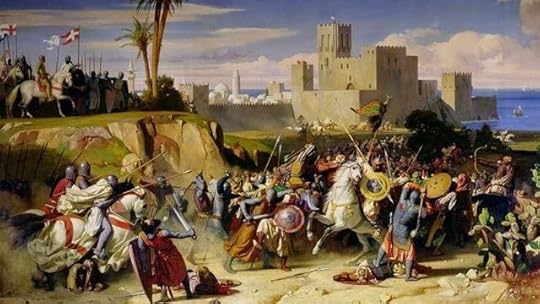
1189 King Philip Augustus of France, King Henry II of England, King Richard I, and Holy Roman Emperor Frederick I Barbarossa initiated the Third Crusade in response to the victory of Saladin in 1187.

1276 Pierre de Tarantaise, the first Dominican pope, was elected, choosing the name Pope Innocence V.


1189 King Philip Augustus of France, King Henry II of England, King Richard I, and Holy Roman Emperor Frederick I Barbarossa initiated the Third Crusade in response to the victory of Saladin in 1187.

1276 Pierre de Tarantaise, the first Dominican pope, was elected, choosing the name Pope Innocence V.

Published on January 21, 2015 03:00
January 20, 2015
Ebook Launch - More's the Pity: And Other Poems by Terry Collett

A section of poems chosen from my most popular and most read work. The subjects vary from childhood to adulthood and there is both humour and sadness.
Amazon UK
Amazon US
Published on January 20, 2015 04:40
Which "Big Bang Theory" Geek Are You?
 Let's Play
Let's PlayI am Leonard:
You like to enjoy both worlds and bring a mix of completely different people into your life. You are smart, funny, good looking and sensitive. Too bad chocolate makes you gassy, you could've been the one

Published on January 20, 2015 04:30
History Trivia - Charles I of England on trial for treason
January 20

1265 The first English parliament was held by Simon de Montfort in the Palace of Westminister (Houses of Parliament)and was attended by elected burgesses and knights.

1327 Edward II of England was deposed by his eldest son, Edward III.
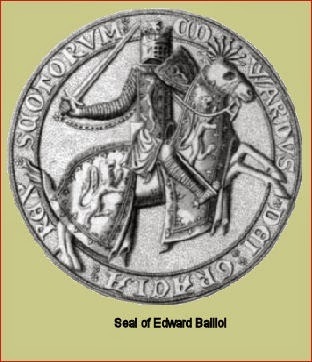
1356 Edward Balliol abdicated as King of Scotland.

1523 Christian II was forced to abdicate as King of Denmark and Norway.

1649 Charles I of England went on trial for treason and other high crimes.


1265 The first English parliament was held by Simon de Montfort in the Palace of Westminister (Houses of Parliament)and was attended by elected burgesses and knights.

1327 Edward II of England was deposed by his eldest son, Edward III.

1356 Edward Balliol abdicated as King of Scotland.

1523 Christian II was forced to abdicate as King of Denmark and Norway.

1649 Charles I of England went on trial for treason and other high crimes.

Published on January 20, 2015 03:00
January 19, 2015
M. C. Arvanitis, writer / WORDS TOGETHER MAKE TALES: What's on your mid grader's e-reader?
M. C. Arvanitis, writer / WORDS TOGETHER MAKE TALES: What's on your mid grader's e-reader?: AND WHAT IS HIDING UNDER THE FERNS? ‘ Pixies of the Ferns, Fernella’s Magic .’ is the third book ...
What's on your mid grader's e-reader?

AND WHAT IS HIDING UNDER THE FERNS?

"Pixies of the Ferns, Fernella's Magia" is the third book of my mid-grade 'fables’. Fernella was imagined during a summer stay at a camp near Mount Hood, Oregon, where large ferns grow in the green forest. While walking through the ferns I imagined what sort of little people might be living under the mysterious growth, and thus this book began.
NOW AVAILABLE at Amazon.com: http://www.amazon.com/M.-C.-Arvanitis/e/B007UJWLC4/Smashwords.com: http://www.smashwords.com/profile/view/MCArvanitisWriter
Soon to be in paperback.

Pixies of the Ferns,Fernella’s Magic
M. C. Arvanitis
-- and the story begins --
Fernella Fabrizio strolled along the edge of the Human ‘s road brushing her short, unruly brown curls away from her green eyes and behind her tiny pointed ears. Her shadow blinked in and out on the ground as the sun filtered down on her through the branches of the great ponderosa pines. She loved the forest smells in the spring. The cinnamon fern plants that grew by the Sandy Waters were just starting to grow, and their fiddleheads were perfect for brewing. She was on her way to collect them for Papa.Her reflection followed her in the small rivulet that flowed beside the road. She was tall for a Pixie girl, slightly over two feet, taller than her petite sisters whose long straight hair flowed neatly to their waists. She felt gangly and out of place when they were all together, but Freddie Faber, the village guard, had assured her he liked her just the way she was. They had been best friends since childhood and had been dating for several months. Only last night he had scolded her for complaining about her looks. Teasingly pulling on one of her curls, he hugged her. “Sugar Plum, who cares if you’re tall? I like curly hair, and you know how I love your pointed ears. When are we going to set the date for our wedding, anyway?”She had no answer for him. Whenever she brought the subject up to her father he always frowned and answered, “Fernella, you were born the seventh child. I was the seventh child in my family. That makes us magical. I don't want you to think about getting married until you find your magic. When you do that we will see about your wedding." She took a deep breath. Instead of the fragrance of the trees, she caught the putrid smell of a Human's monster. "Yuk!" She held her nose. If she stayed on the road the monster would run her down. She knew that to be true. Long ago her Uncle Frank, who had been drinking too much beer, had wandered down it. The old timers told the terrible story of how there was nothing left of him but a wet spot.

Thank you for checking our my books. All books are parent approvedand priced low so all can afford.
 REVIEWS NEEDED
REVIEWS NEEDED
If you buy Pixies of the Fern, Fernella's Magic won't you please give it a review at where you purchased it.
What's on your mid grader's e-reader?

AND WHAT IS HIDING UNDER THE FERNS?

"Pixies of the Ferns, Fernella's Magia" is the third book of my mid-grade 'fables’. Fernella was imagined during a summer stay at a camp near Mount Hood, Oregon, where large ferns grow in the green forest. While walking through the ferns I imagined what sort of little people might be living under the mysterious growth, and thus this book began.
NOW AVAILABLE at Amazon.com: http://www.amazon.com/M.-C.-Arvanitis/e/B007UJWLC4/Smashwords.com: http://www.smashwords.com/profile/view/MCArvanitisWriter
Soon to be in paperback.

Pixies of the Ferns,Fernella’s Magic
M. C. Arvanitis
-- and the story begins --
Fernella Fabrizio strolled along the edge of the Human ‘s road brushing her short, unruly brown curls away from her green eyes and behind her tiny pointed ears. Her shadow blinked in and out on the ground as the sun filtered down on her through the branches of the great ponderosa pines. She loved the forest smells in the spring. The cinnamon fern plants that grew by the Sandy Waters were just starting to grow, and their fiddleheads were perfect for brewing. She was on her way to collect them for Papa.Her reflection followed her in the small rivulet that flowed beside the road. She was tall for a Pixie girl, slightly over two feet, taller than her petite sisters whose long straight hair flowed neatly to their waists. She felt gangly and out of place when they were all together, but Freddie Faber, the village guard, had assured her he liked her just the way she was. They had been best friends since childhood and had been dating for several months. Only last night he had scolded her for complaining about her looks. Teasingly pulling on one of her curls, he hugged her. “Sugar Plum, who cares if you’re tall? I like curly hair, and you know how I love your pointed ears. When are we going to set the date for our wedding, anyway?”She had no answer for him. Whenever she brought the subject up to her father he always frowned and answered, “Fernella, you were born the seventh child. I was the seventh child in my family. That makes us magical. I don't want you to think about getting married until you find your magic. When you do that we will see about your wedding." She took a deep breath. Instead of the fragrance of the trees, she caught the putrid smell of a Human's monster. "Yuk!" She held her nose. If she stayed on the road the monster would run her down. She knew that to be true. Long ago her Uncle Frank, who had been drinking too much beer, had wandered down it. The old timers told the terrible story of how there was nothing left of him but a wet spot.

Thank you for checking our my books. All books are parent approvedand priced low so all can afford.
 REVIEWS NEEDED
REVIEWS NEEDEDIf you buy Pixies of the Fern, Fernella's Magic won't you please give it a review at where you purchased it.
Published on January 19, 2015 05:13



